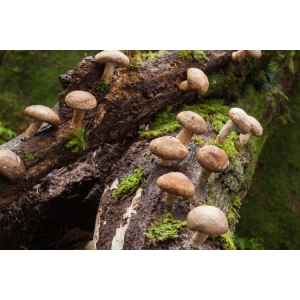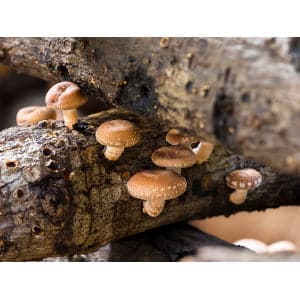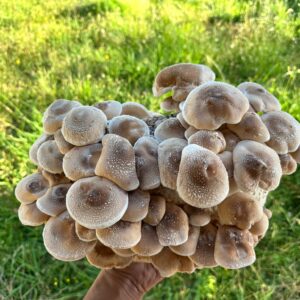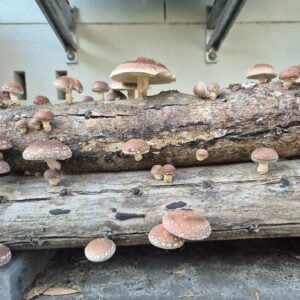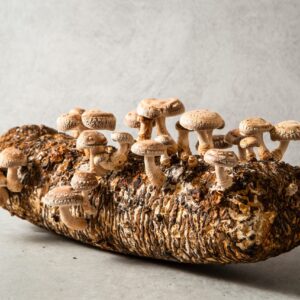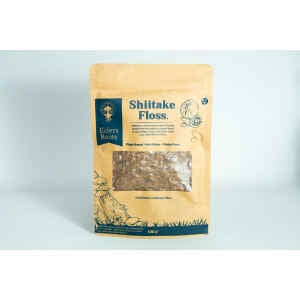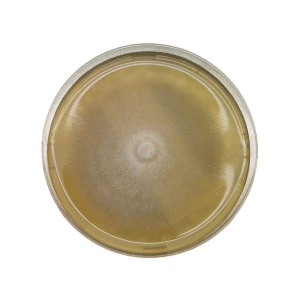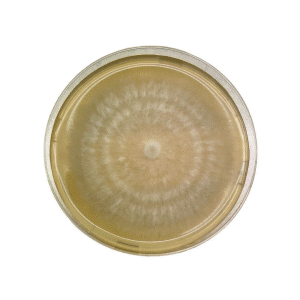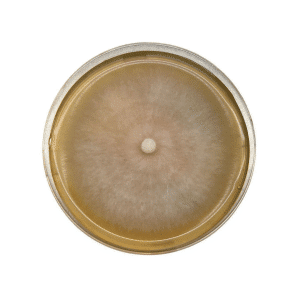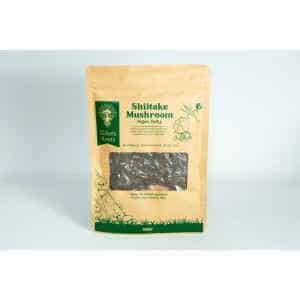Showing all 16 resultsSorted by popularity
Understand Shiitake mushrooms And Know What Rootlab Offer
Shiitake mushrooms (Lentinula edodes) are a popular, edible fungi native to East Asia, known for their rich umami flavor and numerous health benefits. Cultivated and consumed globally, shiitake mushrooms are among the most commercially produced mushrooms worldwide, contributing to around 25% of the total yearly production. This article delves into the details of shiitake mushroom cultivation, nutrition, uses, and taxonomy, offering an in-depth look at one of the world’s most cherished gourmet mushrooms.
Taxonomy and Classification
The scientific name of the shiitake mushroom is Lentinula edodes. It belongs to the kingdom Fungi, division Basidiomycota, and class Agaricomycetes. The shiitake falls under the order Agaricales, family Omphalotaceae, and its genus is Lentinula. Shiitake mushrooms were originally classified as Agaricus edodes by the British mycologist Miles Joseph Berkeley in 1877, and later reclassified into its current genus by David Pegler in 1976. The mushroom has acquired many synonyms over time, reflecting its long taxonomic history.
The name “shiitake” is derived from the Japanese words “shii” (Castanopsis), referring to the tree on which these mushrooms typically grow, and “take” meaning “mushroom.” In traditional Chinese, it is known as 香菇, while in Korean, it’s called 표고 and in Vietnamese, nấm hương.
Distribution and Habitat
In the wild, shiitake mushrooms grow on the decaying wood of deciduous trees like oak, chestnut, and beech. The fungus thrives in warm, moist climates, primarily in Southeast Asia, but can also be cultivated in controlled environments worldwide. Shiitake mushrooms grow in clusters on hardwood logs, typically thriving in oak, beech, and maple. This mushroom is known for its saprotrophic nature, which means it feeds on decomposing organic material, such as dead tree logs.
Cultivation Techniques
Shiitake mushrooms have been cultivated for centuries, with early records of their cultivation dating back to 1209 during the Song dynasty in China. By the late 18th century, the Japanese further developed these cultivation methods, using shii trees as a substrate for growing the mushrooms.
Today, shiitake mushrooms are cultivated globally in two primary ways:
- Log Cultivation: Hardwood logs, typically oak or chestnut, are drilled with holes filled with shiitake grain spawn. This method mimics the mushroom’s natural growing conditions.
- Artificial Substrate Cultivation: Here, sawdust or other organic materials are used as a substrate for the mushrooms. This method is widely used for commercial production. Supplementing the sawdust with wheat bran helps increase yield(max 20%), although excessive supplementation can deform the mushrooms.So, a master mix is not recommended as it has 50% supplementation.
Common mistake growers make when growing Shiitake
Growing shiitake mushrooms is distinctly different from cultivating other mushroom varieties. While they initially grow in plastic bags like many mushrooms, the unique aspect of shiitake cultivation is that the bag is completely removed for fruiting. The exposed block is then placed in a humid environment, allowing it to fruit from all directions. A critical phase in shiitake cultivation that many growers mishandle is the period between flushes, particularly after the first harvest. It’s essential to allow the block to rest for 1-2 weeks in a non-humid environment. This resting phase is crucial for the shiitake mycelium to rebuild its energy reserves and strengthen its defences against potential contamination. After this rest period, the block should be soaked to rehydrate it before being returned to humid conditions for the next fruiting cycle. By respecting this resting phase and following the proper process, growers can maximize their shiitake yield and maintain the health of their mushroom blocks over multiple flushes, ensuring long-term success in shiitake cultivation.
Species Description: Shiitake 3782
One of the high-yielding shiitake mushroom strains is Lentinula edodes var. 3782, which is noted for its consistency in forming round, saucer-shaped fruit bodies if left on the substrate for too long. This variety grows best on hardwood sawdust, and growers are advised to use eco-logs or hardwood fuel pellets as alternatives.
Shiitake 5000
Shiitake 5000 is a highly cultivated strain of the well-known edible mushroom Lentinula edodes, celebrated for its rich flavor and numerous health benefits. This strain is particularly valued in commercial mushroom farming due to its impressive growth rate and high yield potential. Shiitake 5000 thrives in controlled environments, making it a popular choice for growers looking to maximize production. Its dark brown, umbrella-shaped caps and meaty texture make it a favorite in various culinary dishes, ranging from stir-fries to soups.
Australian Native Shiitake
The Australian native shiitake, scientifically known as Lentinula lateritia, is a unique species of mushroom indigenous to the subtropical rainforests of eastern Australia. Found primarily between Coffs Harbour and the Sunshine Coast, this mushroom grows on large fallen logs and decaying wood, playing an essential role in its ecosystem. While it shares many flavor characteristics with its Asian counterpart, Lentinula edodes, such as a nutty taste and chewy texture, L. lateritia is less commonly cultivated. However, it has gained interest among gourmet chefs and mushroom enthusiasts for its distinctive flavor profile and potential culinary applications. As awareness of native Australian fungi increases, the Australian native shiitake is being explored for its unique contributions to both local cuisine and biodiversity.
Environmental Conditions for Optimal Growth
To cultivate shiitake mushrooms successfully, growers must create the ideal conditions, particularly for pinning and fruiting stages. The general guidelines for the species include:
Incubation
- Sawdust blocks: Incubation lasts about 8-10 weeks.
- Log cultivation: Can take between 6-12 months.
- Incubation temperature: Room temperature between 21°C and 27°C is ideal, but it should never exceed 30°C as this can negatively impact the growth of the mushrooms.
Pinning Conditions
- Pinning temperature: Between 10°C and 15°C.
- Pinning humidity: Requires high humidity, about 90-100%.
- Triggering pinning: Cold shocks, soaking logs in water, or physical vibration can encourage the formation of mushroom pins.
Fruiting Conditions
- Temperature: Fruiting occurs between 10°C and 21°C, but the ideal range is 15°C to 17°C.
- Humidity: Requires 75-95% relative humidity for the best results, with cycles of fluctuating humidity levels to simulate the natural environment.
- CO2 concentration: Should be between 500-1000 ppm to maintain optimal growth conditions.
Nutritional Value of Shiitake Mushrooms
Shiitake mushrooms are not only prized for their taste but also for their nutritional benefits. A 100-gram serving of fresh shiitake mushrooms contains only 34 kilocalories and is made up of:
- Carbohydrates: 6.8 g
- Protein: 2.2 g
- Fat: 0.5 g
- Dietary Fiber: 2.5 g
These mushrooms are also rich in selenium (5.7 µg per 100g) and contain moderate amounts of other essential minerals like zinc, copper, and vitamin D. Interestingly, shiitake mushrooms are a significant plant-based source of vitamin D2, which is synthesized from the internal ergosterol upon exposure to ultraviolet B (UVB) rays from the sun or UVB lamps.
Dried shiitake mushrooms offer concentrated nutritional value, with a 100-gram serving providing:
- Energy: 296 kilocalories
- Carbohydrates: 75.37 g
- Protein: 9.58 g
- Fiber: 11.5 g
This makes dried shiitake a nutritious option for adding depth of flavor to dishes while providing a significant nutrient boost.
Culinary Uses
Shiitake mushrooms have been a staple in East Asian cuisine for centuries. They are used in a variety of dishes ranging from stir-fries and soups to more complex recipes. In Chinese cuisine, they are often added to soups and braised dishes. In Japanese cuisine, shiitake mushrooms are an essential ingredient in miso soup, used in dashi broth as a vegetarian alternative, or served as part of various simmered dishes. Prized varieties such as donggu (winter mushrooms) and huagu (flower mushrooms) are particularly sought after for their thicker caps and beautiful flower-like patterns.
Medicinal Properties and Potential Benefits
In traditional medicine, shiitake mushrooms are believed to have several health-promoting properties. One of the key bioactive compounds found in shiitake is lentinan, a polysaccharide that has demonstrated immune-boosting effects. Studies have also suggested that lentinan might have antiviral and anticancer properties. Additionally, the mushrooms contain beta-glucans, which have been shown to lower cholesterol levels, improve heart health, and support immune function.
Curious about their health benefits? Find out Why Shiitake Mushrooms Are Good For You and explore how they contribute to overall well-being.
Shiitake Mushroom Dermatitis
Although generally safe, shiitake mushrooms can cause an allergic reaction known as shiitake dermatitis when consumed raw or undercooked. This condition results in a streaky, pruritic rash that appears within 24 hours of consumption and can last several days. The condition is thought to be caused by lentinan, and thoroughly cooking the mushrooms usually prevents this reaction.
Conclusion
The shiitake mushroom is a versatile and valuable addition to both culinary and medicinal traditions worldwide. From its unique umami flavor to its nutritional benefits, Lentinula edodes continues to be a highly prized mushroom in many cultures. Whether you’re growing it for its rich flavor, its health benefits, or simply to add a gourmet touch to your dishes, shiitake mushrooms remain a staple in global cuisine and an important part of the fungal kingdom.
FAQs
Shiitake mushrooms are known for their rich umami flavor and numerous health benefits, including immune support and anti-inflammatory properties. They are also a popular choice in gourmet cooking.
Eating raw shiitake mushrooms is not recommended as it may cause a skin reaction known as "shiitake dermatitis." Cooking them not only enhances their flavor but also makes them safer and easier to digest.
Shiitake mushrooms can be sautéed, grilled, roasted, or added to soups, stir-fries, and pasta. Their umami-rich flavor makes them a great addition to both vegetarian and non-vegetarian dishes.
Shiitake mushrooms offer a range of health benefits including boosting the immune system, supporting heart health, and providing antioxidants.

